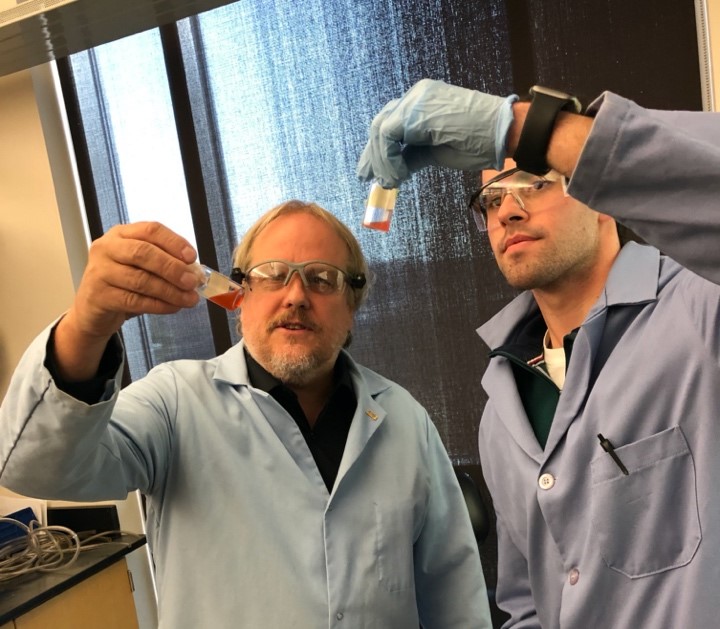Research Focus On Dr. Timothy Hanks
Tim Hanks, MADE in SC Thrust 3 (Rational design of Interactive Biomaterials)
Dr. Hanks is Professor and Chair of the Furman University Department of Chemistry. He is a Thrust Leader in Thrust 3 of the Made in SC program. The Hanks’ lab designs and synthesizes nanoparticles, fibers and films based on highly conjugated polymers and polymer composites. Of particular interest is understanding the interactions of these materials with biological systems and the resulting cellular responses.
Biofouling is the unwanted accumulation of organic matter on surface in an aqueous environment. Ocean structures and vessels rapidly experience the deposition of microorganisms that form biofilms. These, in turn, provide anchorage for macrofouling organisms, which cause added stress on static structures and excessive fuel consumption on vessels. Medical implants can undergo a similar process that can lead to infections and rejection of the implant. The Hanks’ group is developing coatings from polypyrrole and polyaniline that are surface-modified with hydrophilic polymer brushes. These have been found to be highly resistant to the deposition of adhesive proteins, as well as bacterial and diatoms. Current work involves patterning of the films with a blend of biocidal and antifouling brushes, the preparation of antifouling nanoparticles for blending into conventional paints and controlling surface roughness of the coatings.
A second area of interest is the preparation of liposomes prepared from long-chain fatty acids that contain two conjugated acetylenes midway down the chain. On exposure to UV or -irradiation the diacetylenes polymerized forming fully conjugated “strings” around the the liposome lumen. The resulting 100 nm nanoparticles are an intense blue color, which changes to red upon application of certain stimuli, such as heat, pH change, mechanical stress or, with the appropriate derivatization, interaction with bacterial pathogens or other biological species. Current work involves surface modification of the liposomes for enhanced selectivity, incorporation of quantum dots into the lumen for improved optical response and incorporation of magnetic nanoparticles into the aqueous core to enable external manipulation.
February 20, 2020